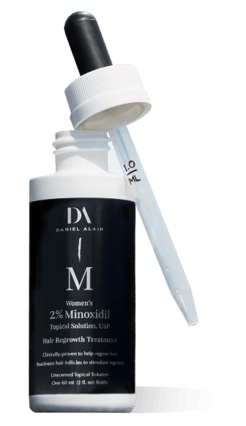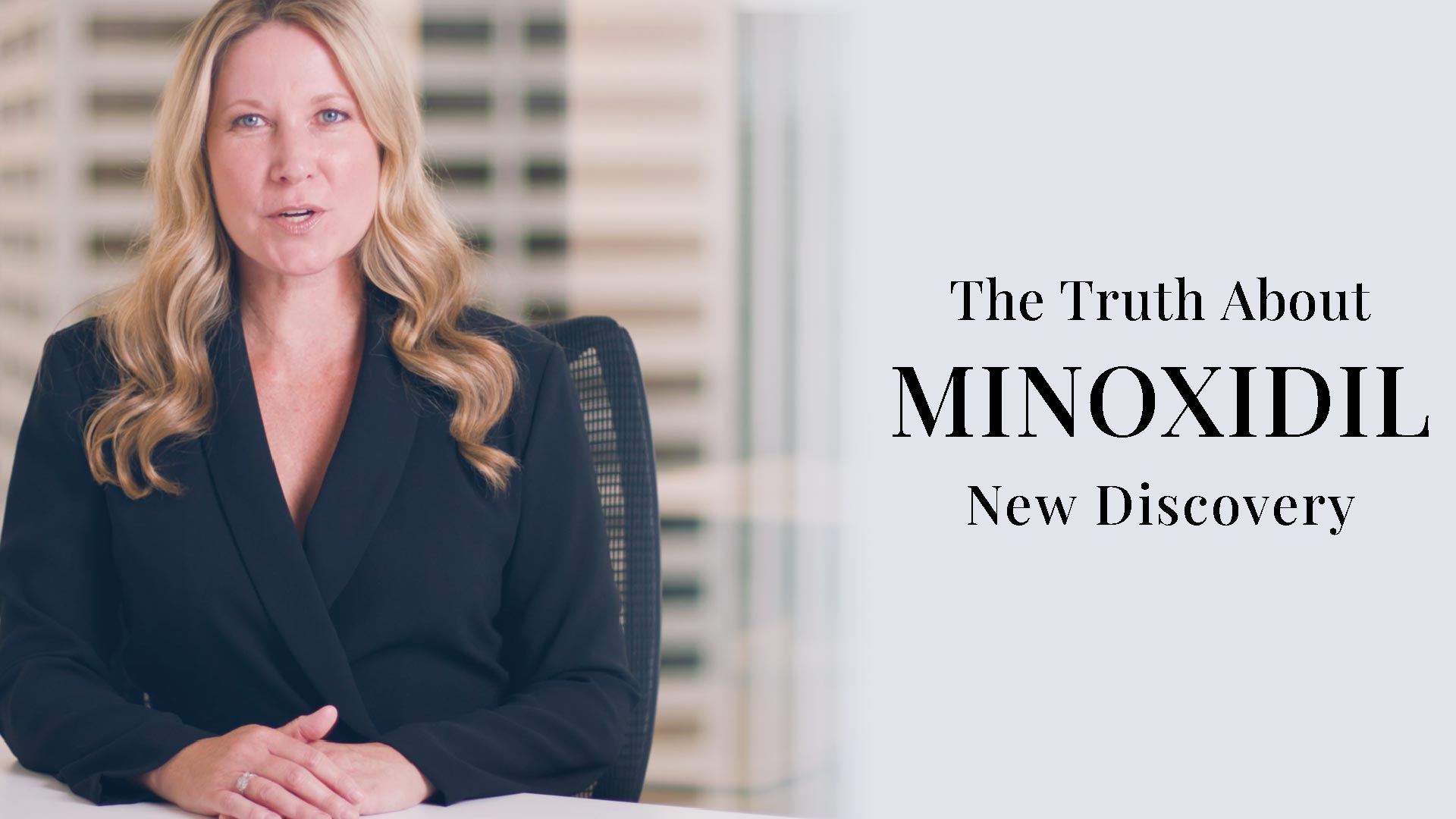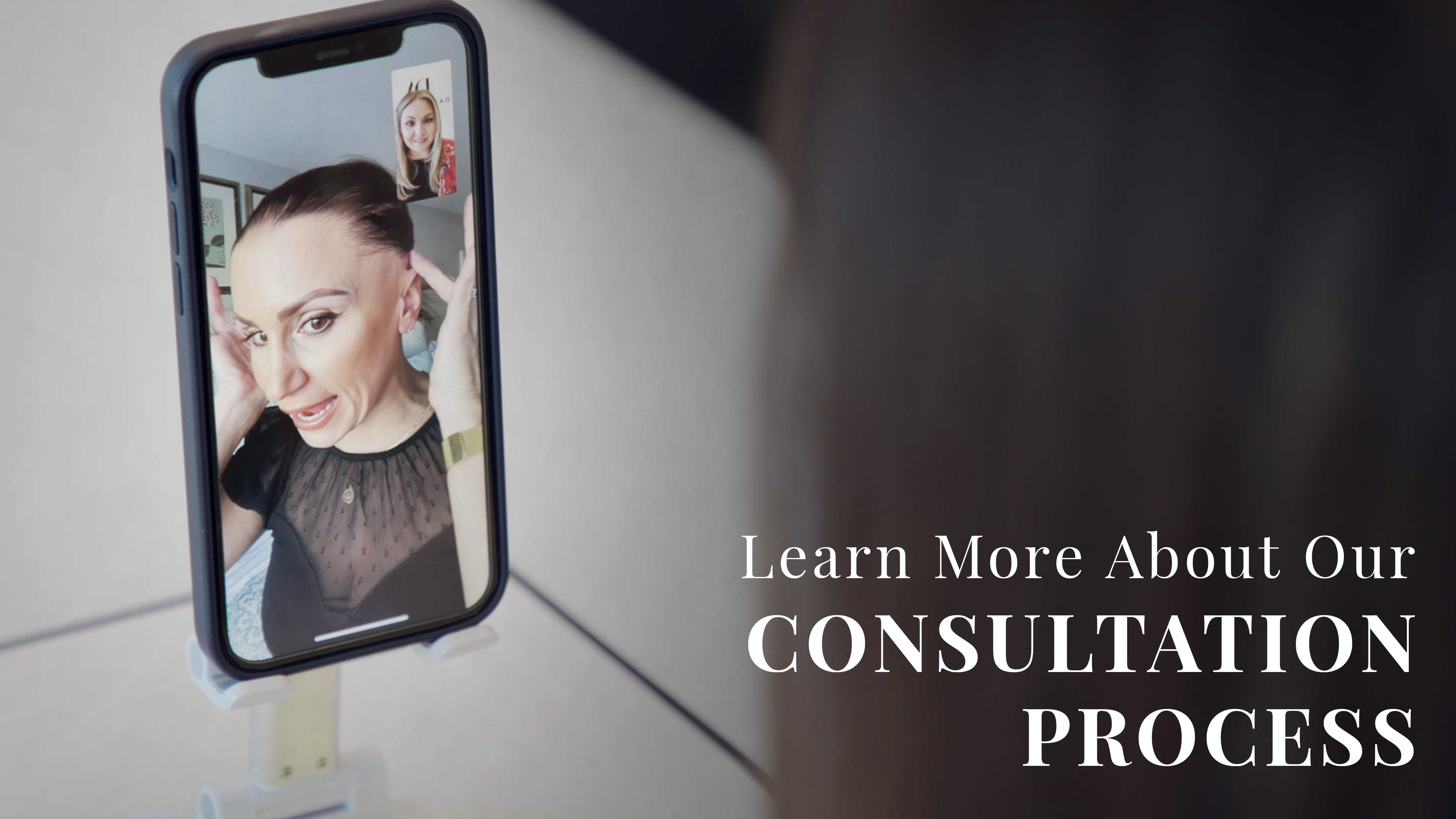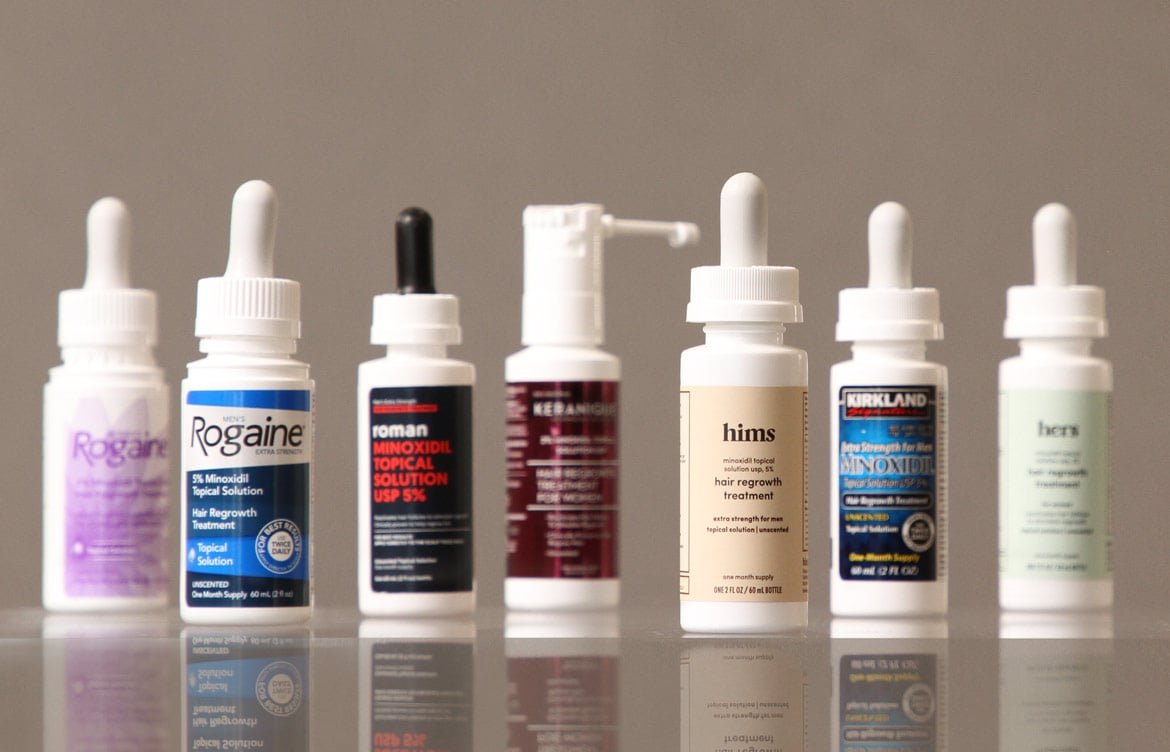It might sound counterintuitive, but technically, Minoxidil causes hair loss at the start of treatment — shedding, specifically. However, shedding is part of Minoxidil's regrowth process and actually signifies that your body is responding to the drug. But can Minoxidil cause hair loss overall?
Minoxidil doesn’t cause hair loss. The initial shedding is only temporary.
But how long does Minoxidil-induced shedding occur, and where’s the line distinguishing normal from worsening hair loss?
We know how you’re feeling. Hair loss is an anxiety-ridden journey for both men and women, so the thought of your chosen solution exacerbating the problem is haunting.
Pair this initial shedding with an abnormally long time to see results, and it’s easy to feel frustrated with Minoxidil as a viable hair loss treatment.
But the truth is Minoxidil can regrow your hair — you just need to include some vital steps to the process to maximize its capabilities. Daniel Alain’s Minoxidil Response Test (MRT) is the only sure way to determine whether the drug will regrow your hair.
Getting back to that unwelcome shedding — let’s explore why Minoxidil may cause initial hair loss and how to best use it to reawaken your hair follicles and regrow the fab hair you deserve!

your hair may look worse before it looks better

Feeling stressed lately at work? Or perhaps you’re dealing with hereditary hair loss. Either one of these (plus tons more hair loss causes) could be the culprit for your thinning and shedding. So, you turn to Minoxidil.
But a month into the treatment you do a double-take in the mirror:
Could it be that your hair shed has gotten worse?
Unfortunately, that's just part of Minoxidil's regrowth process. Can Minoxidil cause hair loss and solve it at the same time? Strange, but yes.
Once your scalp awakens Minoxidil's active ingredient, your hair growth cycle accelerates from telogen (resting) to exogen (shedding). Luckily, this is only temporary.
Dr. Sankpal describes how the initial Minoxidil shedding typically only accompanies already thinning hair strands that are frizzy, brittle, and malnourished. Think of it like a purge, a necessary stage to make way for your brand new, invigorated hair.
You might notice shedding anywhere from 2-8 weeks after your application. If shedding persists after a few months, the treatment might not suit you.
One last thing — will Minoxidil cause hair loss for everyone? No. Everyone's hair loss is unique, so you'll see different responses to the drug. While initial shedding does indicate the medication is working, that doesn't necessarily mean no shedding signals ineffectiveness. Whether you have the initial hair shedding or not, the best way to test Minoxidil's effectiveness is to take Daniel Alain's MRT.
HOW DOES MINOXIDIL WORK TO REGROW HAIR?

Remember, Minoxidil wasn’t initially created for hair loss. The drug was originally a vasodilator for treating people with hypertension (high blood pressure). It opens up your blood vessels to enable better circulation throughout the body. That circulation works for your hair follicles as well – dilated vessels allow oxygen and hair-healthy nutrients to reach your scalp.
Furthermore, Minoxidil is thought to shorten your hair growth cycle’s telogen (resting) phase and lengthen your anagen (growth) phase. However, with that shortened telogen phase, your hair growth cycle speeds its course to the exogen (shedding) phase, meaning more hair loss in the early stages.
But the event majeur?
Minoxidil is a pro-drug — an inactive compound — that your body must metabolize with a catalyst to see results. That catalyst comes from the novel SULT1A1 enzyme that Daniel Alain’s team of scientists and dermatologists recently discovered (more on that later).
Ready to try Minoxidil? Make sure it works for your hair, first. Start with taking a Minoxidil Response Test to see if Minoxidil is right for you.
How EFFECTIVE IS MINOXIDIL?
Minoxidil might be an exciting prospect if you’re suffering from hair loss. After all, Rogaine® touts guaranteed effectiveness and results for:
If you’ve struck out with Minoxidil, you might think:
Was I the 1 in 10? Or the 20%?
The chances feel low, so what gives? Here’s the truth: Minoxidil doesn’t work for most people on its own.
The real figures are closer to 30-40% for women and 50% for men.
The cited one 6-month study used for Rogaine®’s figures included under 100 participants. Feels light, right? Especially considering over 80 million Americans suffer from hair loss.
The reality? The effectiveness is much lower than advertised. We now know that Minoxidil only works for people with the novel SULT1A1 scalp enzyme activity — seen in about 50% of men and 30-40% of women. Think of it as a catalyst to transform Minoxidil into its active form. No matter how long you wait for results, they’ll never manifest without this SULT1A1 scalp enzyme. But here’s the kicker:
Can Minoxidil cause hair loss even if you have the right enzyme activity? Initially, yes.
With that scalp activity, your hair produces Minoxidil’s active form — Minoxidil sulfate.
Now, how long does that game-changing enzyme take to regrow your hair? According to Rogaine®, around four months. But studies estimate it closer to 6-9 months.
No one likes waiting. But for the first time, Minoxidil's effectiveness is actually under your control. Take a Minoxidil Response Test to find out if Minoxidil will work for you.
The Minoxidil Response Test is the only reliable way to determine whether you have the right scalp environment to activate Minoxidil’s active form (Minoxidil sulfate). Instead of waiting months for results, you’ll know within a two weeks tops, with 95% accuracy.
While Minoxidil is a worthy solution to regrow your hair, it’s not the only one that can help. Decades of research and development opened up even more hair loss solutions for you to try.
Say goodbye to shedding with daniel alain's hair loss solutions!
So, can Minoxidil cause hair loss despite its function to cure it? It’s true — Minoxidil can cause hair shedding when you first start taking it. The good news is that shedding signifies progress. Your beloved hair follicles are working overtime to produce gorgeous new tresses for your next growth phase!
But here at Daniel Alain, we’re well aware of the problems with Minoxidil. Long wait times and uncertainty shouldn’t add to the stress of hair loss. That’s why we worked for decades to develop the Minoxidil Response Test — the fastest way to know if Minoxidil will work for you.
Minoxidil is a safe, effective hair loss treatment, especially with Daniel Alain’s clinically proven effective products. But 100% European human hair wigs also provide ample coverage without the long wait time for results, infusing you with confidence and style.
There are dozens of hair loss solutions at your fingertips. Talk to one of our hair experts today to discover the right ones for you!
book a free consultation
Our stylists will help you find the right hair loss treatment for you

Frequently Asked Questions
Can Minoxidil Worsen Hair Loss?
Initially, yes, some Minoxidil users experience more significant hair loss within the first few months of taking the drug. However, this is normal and a sign of Minoxidil’s effectiveness. If the shedding doesn’t subside within a few weeks, consult a doctor.
Does Minoxidil Cause Permanent Hair Loss?
No, Minoxidil doesn’t cause permanent hair loss. At worst, you could experience hair shedding that doesn’t subside if you stop taking the drug.
Why Does Minoxidil Cause Hair Shedding?
Minoxidil speeds up your hair’s resting phase, which usually leads to some shedding.
How Long Does Hair Fall After Using Minoxidil?
You might experience hair fall after using Minoxidil for a maximum of four months. If you continue to experience hair fall after four months while still taking Minoxidil, see a doctor.
Does Minoxidil Harm Healthy Hair?
No, Minoxidil doesn’t harm healthy hair. At worst, it might cause some initial hair loss when your scalp first reacts to the drug.
However, Minoxidil users with color-treated hair might experience more scalp irritation than others.
Does Hair Grow Back After Stopping Minoxidil?
No. Minoxidil is FDA-approved for lifetime use — people who start and subsequently stop treatment will usually notice their hair fall returning. Generally, you’ll experience results for as long as you take Minoxidil.
Is Minoxidil Safe to Use?
Yes, Minoxidil is safe to use for most people. However, experts caution against using it if you’re pregnant or breastfeeding. We recommend you take note of any other medications you’re taking and check with your doctor before adding Minoxidil to the mix.
Moreover, make sure you understand Minoxidil’s side effects before use — if you experience any dizziness, chest pain, or trouble breathing after taking the drug, consult a doctor immediately. Men and women might experience some different side effects. Pro tip — check out our Women’s and Men’s Guides to Minoxidil!
How Long Until Minoxidil Begins to Work?
Minoxidil takes 6-9 months to show results, though some users experience regrowth within three months.
Unfortunately, the waiting period applies to both Minoxidil responders and non-responders. The best way to save time in your hair loss journey is to take the Minoxidil Response Test (MRT) to find out for sure if Minoxidil will work on your hair!
Why isn't Minoxidil Working for Me?
Minoxidil only works for people with SULT1A1 scalp enzyme activity. If you don’t have it, then Minoxidil will never work for you. The best way to test for the necessary scalp environment for Minoxidil to work is the MRT.
Another reason why Minoxidil might not work for you is your specific hair loss cause. Minoxidil is only FDA-approved for androgenetic alopecia — genetic hair loss. For example, if you’re experiencing chemotherapy-induced hair loss, Minoxidil might not work for you.
How Do I Get Tested to See if Minoxidil Will Work for Me?
The only way to see if Minoxidil will work for you without waiting months for results is the Minoxidil Response Test.
The process is simple:
- Order and register your kit.
- Extract a few hair strands from your scalp.
- Send them to our CLIA-certified lab for testing.
- See your results within 7 to 14 days.
How Much Does a Minoxidil Test Cost?
Yes, you can use Minoxidil throughout color treatment. However, you should still follow Minoxidil’s application
The Minoxidil Response Test costs $139.00 for both men and women. No pink tax here!
Where Can I Buy a Minoxidil Response Test?
You can buy a Minoxidil Response Test on Daniel Alain’s website:
Where Can I Buy Minoxidil?
You can buy Minoxidil on Daniel Alain’s website:





